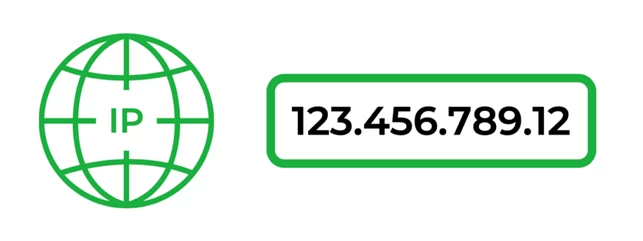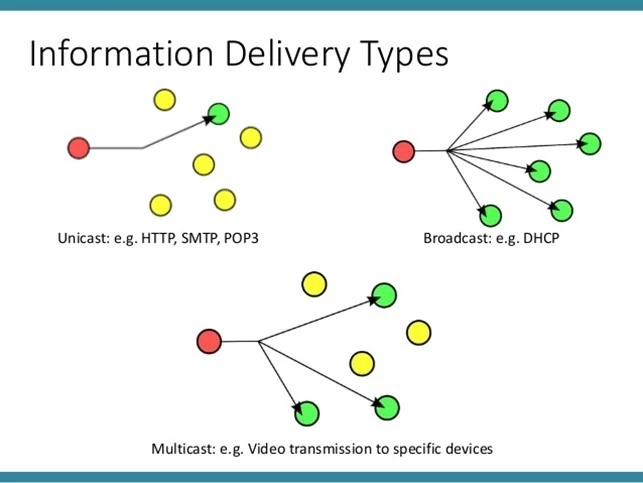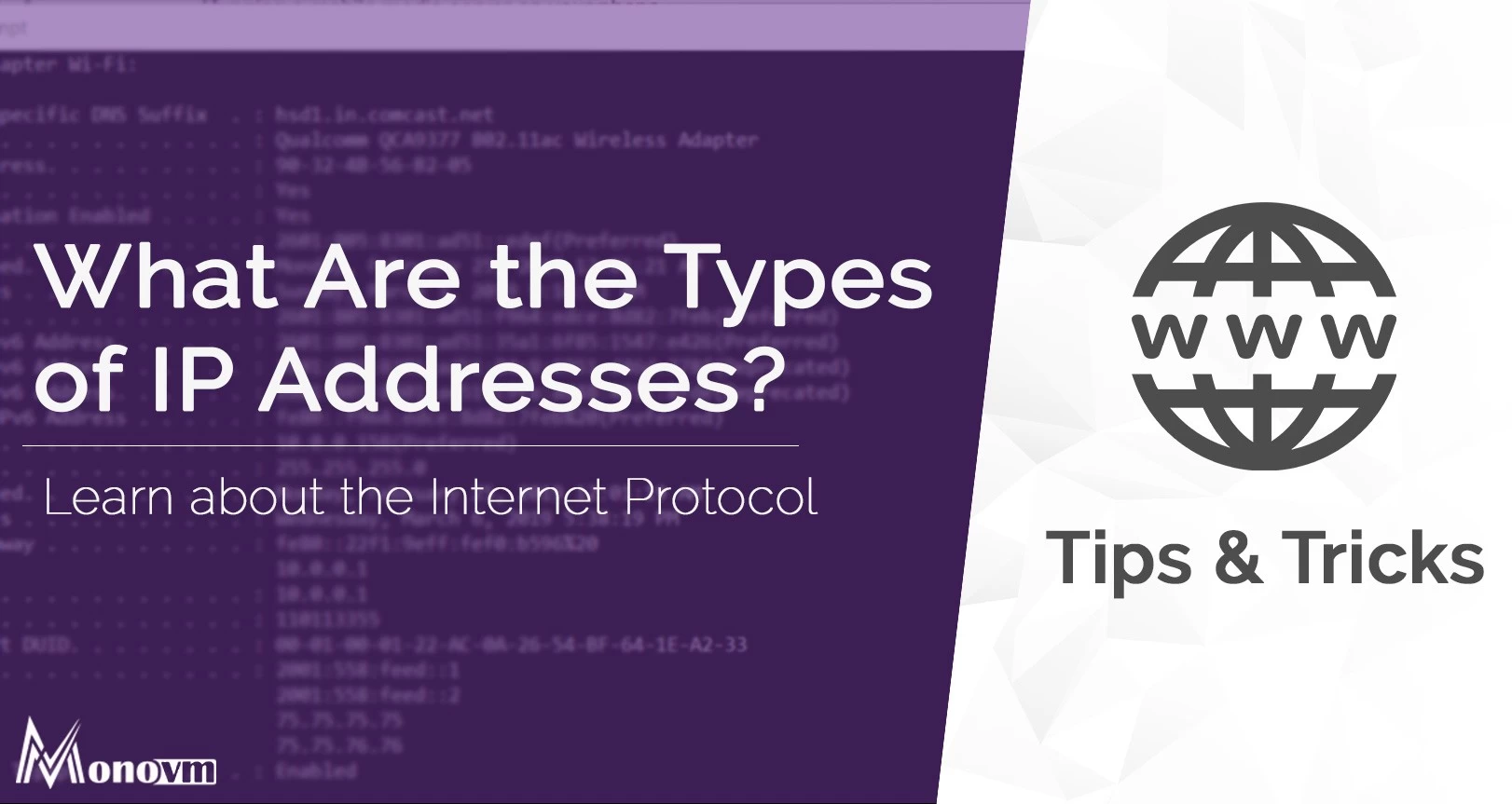List of content you will read in this article:
Most people do not give a second thought about how the internet works and how many types of IP addresses we can use? It is a complicated web of connections between different computers, routers, and servers all working together to allow for seamless communication between them.
Since all these computers and servers are interconnected together, there needs to be a way for them to know where to send the requests and data. As a solution, computer scientists came up with an addressing system that allows for each internet-connected device to have a unique address that other devices can use for communication is known as internet protocol, this kind of address is provided by it (i.e., IP) at the network layer.
What is an IP Address? [Definition]

IP stands for Internet Protocol which is “the set of rules governing the format of data sent over the internet or other network”. In layman’s terms, it forms the foundation of how the internet works and how different systems communicate with one another.
An IP address is a 32-bit (for IPv4) or 128-bit (for IPv6) address which is made up of the network ID and a unique host ID. It acts as the identifier for each device connected to the network, which is used by the internet to differentiate between different computers, routers, and websites.
Imagine transferring data across the internet as sending letters through traditional postal services. You need to write the recipient’s physical address on the envelope, otherwise, it will never reach the intended destination. An IP address of a machine is the physical address of the letter recipient but in the virtual world. Without it, your PC will not be able to receive any data or send any packets across the network, be it local or the World Wide Web.
Types of IP Address
Most tech enthusiasts would tell you that IPv4 and IPv6 are the two IP address types but that is not the case. Contrary to what they think, however, there are different ways to classify IP addresses and within some categories, there are even sub-categories for further differentiation.
Sounds quite complicated but once it is all laid out appropriately, it’s actually not that difficult to understand. Here is the gist of it.
1. Types of Consumer IP Addresses
When you get an internet plan, be it for your business or personal use, you will have two types of IP addresses: a private IP and a public IP.
1.1 Private IP Addresses
As the industry of IoT (Internet of Things) expands, more and more smart devices are joining your home network. With things like smart refrigerators, smart microwaves, and even smart toasters all needing a Wi-Fi connection, your router needs a way to differentiate between all these devices.
These IoT devices along with the regular PCs, laptops, tablets, and phones all have a private IP address assigned to each one of them. The router uses this private IP to recognize which device needs to be serviced. This also extends to most Bluetooth devices as well.
Of course, there is a way to check what is a device’s private IP address and in most cases, a way to change it. These types of IPs, however, are seldom used by a person and are mostly only needed for use by the router, thus you do not really need to know what private IP address each item has.
1.2 Public IP Addresses
As we mentioned previously, each device on a network has its own unique IP address. All of these devices, however, are included under the main public IP address for your network. It is the one primary address associated with your whole network.
The public IP address is provided to the router by your ISP (i.e., Internet Service Provider). This is the address all the devices outside your network use to recognize said network and the devices connected to it.
All of your internet activity is tied to your public IP. ISPs can determine who is visiting which sites and using the internet through the public IP address.
1.2.1 Dynamic and Static IP Addresses
Both dynamic and static IP addresses fall into the public IP category. Here is the difference between them.
1.2.1.1 Static IP Addresses
As the name indicates, static IP addresses typically never change, however, they can be changed with network administration. They are considered a permanent internet address, thus providing a simple and reliable way to transfer packets to and from the device. Not many users actually opt for a static IP address but there are some cases where its use is necessary such as a Hosting, VPS server (What IS VPS Hosting), Dedicated Server.
In most cases, it is very inefficient for a business to host an on-premises server as there are web-hosting providers, such as MonoVM that will do it for you for a much more affordable price and with greater convenience. Maintaining your own server can be a hassle and can result in server failure if not done correctly.
1.2.1.2 Dynamic IP Addresses
This is the type of IP address that is usually provided to the users by ISPs. They change every time when your device is rebooted, a new device is added to the network, or the network configuration gets changed.
This solution also ends up being a more secure option than having a static IP since regular IP address changes make it more difficult for hackers to get access to your network interface. Thus, this is commonly the go-to option for most internet users.
Types of IP Address Versions
Currently, there are two versions of IP addresses being used: IPv4 and IPv6.
IPv4
IPv4 stands for internet protocol version 4. This is the one you will see used the most. These addresses are 32-bit long and divided into four parts known as octets, each containing 8 bits. This protocol has been around since 1981 and has not seen many changes since. Despite it having 4,294,967,296 possible IP addresses, we are still running out of them to use.
IPv6
With the rapid expansion of the internet, there is a global shortage of IPv4 addresses. To combat this, Internet Engineering Task Force (IETF) has developed IPv6, the most recent version of the internet protocol, intended to replace IPv4. It uses a 128-bit addressing system, allowing for approximately 3.4x1038 addresses. The actual number is a bit lower as some IPs are reserved for special use.
Here are some of the main advantages IPv6 provides:
- Faster routing
- Better end-to-end connectivity
- Easier administration
- Improved mobility features
- Superior Multicast and Anycast abilities
- More security for applications and networks
IP Address Classification Based on Operational Characteristics
There are three different types of IP addresses within this classification.

1. Unicast IP Addresses
This is an address of a single interface which are used for one-to-one communication. Unicast IP addresses are used to direct packets to a specific host.
2. Multicast IP Addresses
Multicast IP addresses are used for one-to-many communication. Multicast messages are sent to IP multicast group addresses. The packets reach multiple destinations, however, not every single one of them.
3. Broadcast IP Addresses
This type of IP is used to send data to all the possible destinations within the broadcast domain.
Conclusion
As you can see, there are many different types of IP addresses and they have been classified, categorized in different ways and all of them have their use. We hope that this article broadened your horizons on the differences between the IP address types and how they are used as the backbone of device communications over the internet and local networks. If you have any questions or suggestions, please leave them in the comment section of this blog.
People Are Also Reading:
